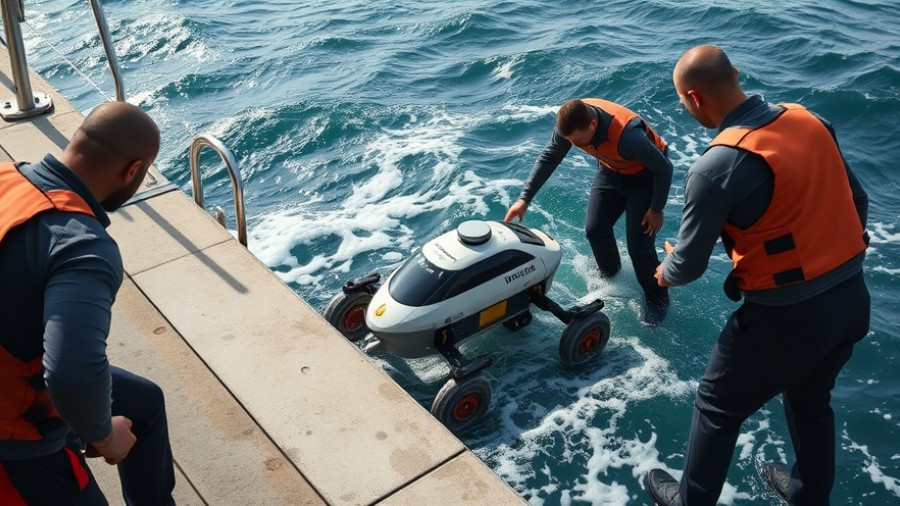
US Navy's Evolving Undersea Capabilities
The recent advances in the U.S. Navy’s initiatives for launching and recovering Autonomous Undersea Vehicles (AUVs) from torpedo tubes signifies a notable commitment to enhancing undersea warfare capability. With technologies like the REMUS 620 taking center stage, the emphasis on modular and adaptable underwater vehicles is clearer than ever. This development comes in the wake of significant milestones achieved through joint testing among various organizations including HII, Woods Hole Oceanographic Institution, and the Navy’s Undersea Warfare Center.
Highlighting the REMUS Tech
The REMUS family of unmanned underwater vehicles (UUVs) serves critical roles in naval operations, especially with its proven ability to operate independently or alongside crewed vessels. This versatility extends mission range and decreases risk, aligning well with the Navy’s broader operational goals. More than 700 REMUS units have been deployed worldwide, showcasing their durability: over 90% of these vehicles remain in service, marking their lifecycle value in defense settings.
A Glimpse into the Future of UUVs
With the cancellation of previous UUV variants like the Razorback MK20, attention now shifts firmly to vehicles like the Yellow Moray, which is gaining traction for its design and operational potential. This next-generation UUV has already completed significant deployment tests, marking an operational milestone with the USS Delaware. Such progress illustrates how adapting existing technology can provide the Navy with enhanced capabilities for undersea missions.
Operational Successes and Lessons Learned
The operational deployment of the Yellow Moray UUV during recent missions in the U.S. European Command area stands out as a first for the Navy, indicating successful integration of unmanned systems with conventional submarine operations. Despite encounters with recovery challenges during initial deployments, refinements in functionality have managed to tie academic expertise with fleet needs, promising further operational synergy.
Counterarguments: Evaluating Challenges
Despite the advancements, there are ongoing concerns regarding the integration of UUVs into standard submarine protocols, notably regarding the difficulties in recovery processes. The Navy has encountered setbacks with several UUV programs, igniting debates on the operational readiness. However, the increased performance metrics from vehicles like the REMUS 620 and Yellow Moray encourage continued investment.
Embracing the New Era of Naval Warfare
As the Navy evolves its approach to integrating unmanned systems, the strategic advantages of launching and recovering UUVs via torpedo tubes expand the Navy’s operational landscape. This capability not only mitigates danger to personnel but also enables mission execution in previously inaccessible environments. The importance of these drones in providing additional sensors and data gathering tools cannot be overstated, illustrating their potential to further expand the Navy’s underwater reach.
In conclusion, the Navy's commitment to advancing unmanned systems represents a significant pivot towards modern warfare strategies. While challenges remain, particularly in the integration and operation of these systems, the successes already observed provide a strong foundation for future advancements. Engaging with emerging technologies in the realm of undersea warfare is critical not only for the Navy’s operational capabilities but also for maintaining national security.
 Add Row
Add Row  Add
Add 




Write A Comment